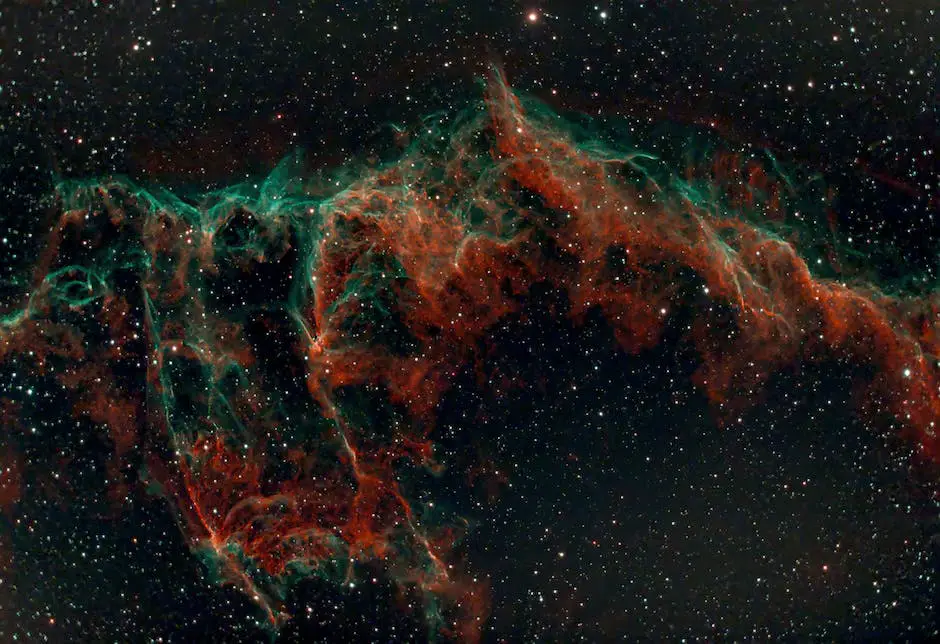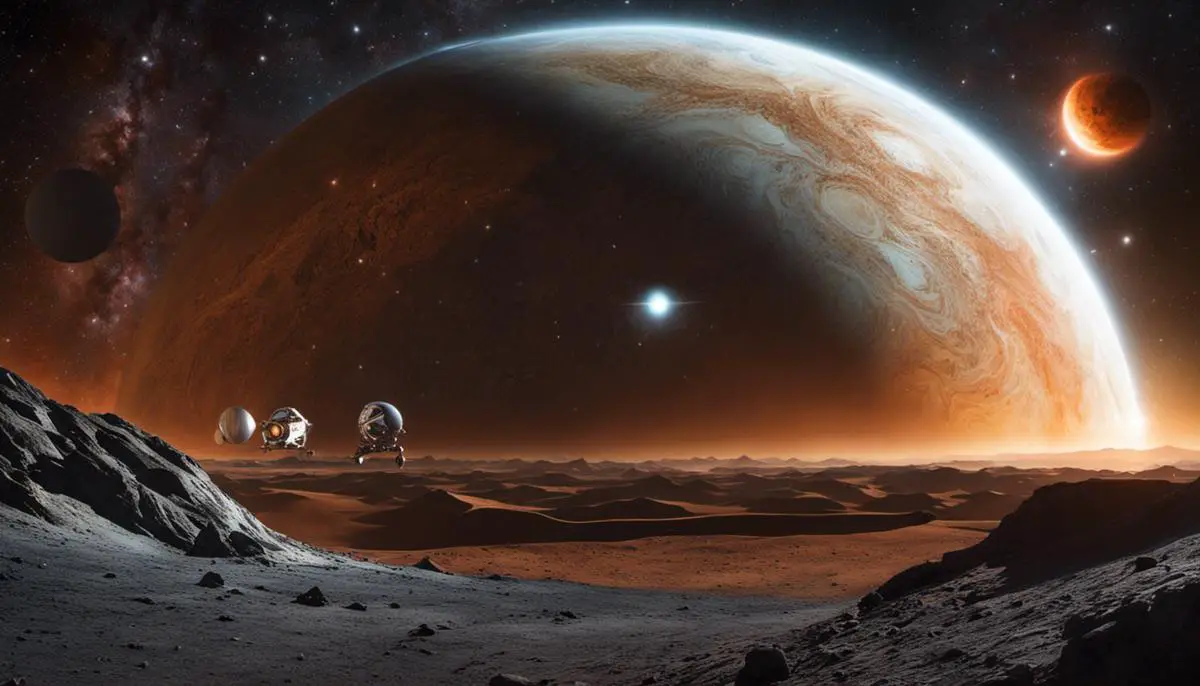Our fascination with the cosmos has often led us to dream of adventures beyond our home planet. With the discovery of exoplanets within the habitable zone — the area around a star where conditions may be just right to harbor life — generally lightyears away, it seems we are one step closer to turning imagination into reality. But, how do we find these celestial bodies that hold promise for life? The cutting-edge techniques and methodologies scientists use can shine a light on this. Certain exoplanets such as Kepler-22b and Proxima Centauri b have stood out in this quest, exhibiting attributes that not only make them livable but possibly even more habitable than Earth. However, ambitious as we may be, it’s important to acknowledge the challenges that lie ahead. But with challenges come opportunities. Emerging technologies and future directions may well hold the key to unlocking these new homes in the cosmos.
Identification of Potentially Habitable Planets
Scientists Identify Potentially Habitable Exoplanets: A Step Closer to Discovering a Second Earth
Exoplanetology, the scientific pursuit of identifying planets outside our solar system, is an intricate and exhilarating field, driven by an insatiable desire to decipher the universe’s magnum opus: the potential existence of extraterrestrial life. To that end, scientists meticulously scrutinize these celestial entities, known as exoplanets, to determine their potential habitability, a task that goes beyond mere astronomy into the realm of astrobiology and geophysics.
Characterizing Exoplanets: The Telescope’s Gaze
The discovery of exoplanets begins with data collected by powerful telescopes, such as Kepler and Hubble, or more recently, the Transiting Exoplanet Survey Satellite (TESS). These marvels of technology recognize their quarry from the tiniest dimming of light or slight wobble of host stars, indicating the presence of an orbiting planet. While such stellar dimming was initially thought of as insignificant, it is now heralded as a cornerstone of exoplanet discovery.
Keystone Measures: Size, Distance, and Composition
Several factors come into play when assessing an exoplanet’s potential habitability. Size and distance, for instance, are paramount to discerning an exoplanet’s Earth-like potential. Planets larger than twice the size of Earth render a higher likelihood of hosting a gaseous rather than a terrestrial atmosphere, while those that are too small carry the risk of insufficient atmospheric retention.
Further, the Goldilocks Zone, or habitable zone, deserves mention. This is the ideal distance a planet should be from its host star, allowing surface water to exist in a liquid state – not too hot, not too cold, but just right, much like Goldilocks’s preferable porridge.
Another pivotal aspect of habitability research is the composition. Planets composed largely of rock, similar to Earth, are considered highly likely to be habitable. Spectrographic analyses provide the necessary intel on the composition, probing light emitted or absorbed by the planet to expose signs of critical life-supporting elements like carbon, oxygen, and nitrogen.
The Intricacies of Atmosphere
An exoplanet’s atmosphere is perhaps the single most significant determinant of its ability to support life. The thickness, composition, and constant recycling of volatile substances like water and carbon dioxide (a process known as the carbon-silicate cycle), balance the planet’s temperature, making the existence of liquid water—and therefore, life as we know it—possible.
The Search Goes On
While the journey of identifying habitable exoplanets sparks innumerable complexities and uncertainties, it remains one of tremendous potential. Each new discovery presents a valuable piece in the grand cosmic puzzle. As we continue to survey the celestial canvas for signs of life, these efforts reaffirm the assertion that no stone—or in this case, interstellar rock—should be left unturned in our quest to better understand our place in the cosmos. Undoubtedly, it’s indeed a fascinating era for exoplanetology and the quest for extraterrestrial life.

Exoplanets More Habitable than Earth: Kepler-22b & Proxima Centauri b
Undoubtedly, the previously covered topics play a crucial role in the identification and evaluation of exoplanets. Yet, delving deeper to inspect key exemplary exoplanets could shed light upon potential beneficiaries of these scientific endeavors, ranging from astrobiologists to philosophers and regular space enthusiasts among us. The continuous expansion of scientific knowledge in this field, intertwined with the wonderment of otherworldly prospects, highlights a few particular celestial candidates that might surpass Earth in habitability.
Among the plethora of exoplanets located within the confinements of the Goldilocks Zone, Kepler-22b, discovered by NASA’s Kepler spacecraft in 2012, stands out. With a radius 2.4 times the size of Earth and an orbital period around its sun-like star equivalent to 289.9 Earth days, this exoplanet offers an intriguing potential for habitability. Scientists predict a reasonable atmosphere temperature, considering the planet’s sun is slightly cooler than ours. However, the question of Kepler-22b’s composition and water availability remains open, necessitating future exploration and dearth of understanding before inferring substantial conclusions about its habitability.
Following the Kepler exoplanet series, another alluring candidate is Kepler-62f, a super-Earth orbiting within the habitable zone of a cooler, older star located approximately 1200 light-years from Earth. Scientific models suggest a variety of possible atmospheres and water compositions, some of which could substantially support life. Given the right atmospheric conditions, Kepler-62f might harbor a stable ocean across its entire surface.
Proxima Centauri b takes habitability on exoplanets deeper into the realm of possibilities. Located in our neighboring star system, Alpha Centauri, and only approximately 4.2 light-years away, this exoplanet could be our best shot at finding life beyond our solar system. Combination of a gentle, orbiting star and an Earth-sized planet within the habitable zone of its star remarkably suggests a potential for liquid water to be present. The proximity to Earth makes it a tantalizing target for future investigations.
Lastly, the recently discovered TOI-700d, announced by NASA in 2020, offers another tantalizing possibility. The outermost of three planets orbiting a star similar to our Sun but approximately 40% smaller and cooler, TOI-700d’s size, location, and estimated temperature suggest that it could be supporting life. The exact conditions on the planet’s surface and its atmosphere are, however, yet to be confirmed.
These exoplanets represent but a minute fraction of the myriad of celestial bodies under scientific scrutiny. As the understanding of exoplanetology deepens, it delivers both newfound awe and inquisitive investigations, anchoring on the possibility of finding not just life, but perhaps advanced civilizations in the distant cosmos. These explorations offer, if not a home away from home, an earnest insight into deciphering our universe’s enigmatic mosaic.

Challenges in Colonizing Exoplanets
Following the detection and study of theoretically habitable exoplanets, the arduous and immensely complex task of considering human colonization beckons. Although the existence of distant worlds within habitable zones stimulates speculation about extraterrestrial life, earnest consideration on human habitation reframes our understanding towards more practical and tangible concerns.
Commencing with the most rudimentary issue – the enormous distances to these exoplanets – interstellar voyages pose insurmountable challenges with existing technology. Terrestrial space missions have yet been confined to our Solar System. Visiting our nearest exoplanet, Proxima Centauri b, located a staggering 4.24 light years away, would take approximately 6,300 years with present propulsion technology. This brings us to the crux of space travel – swift, reliable propulsion methods that can span light years yet remain within the bounds of human lifespan.
Besides the difficulties of reach, the hostile environments upon arrival are extremely challenging. Even exoplanets within habitable zones may confront settlers with unfamiliar and harsh conditions, including extremes in temperature, gravity, and radiation levels. The full-throttled dust storms on Mars, soaring radiation levels on Jupiter’s moon Io, and Venus’s crushingly dense atmosphere hint at the variety of violent conditions that might be encountered. The oppressive gravity of a larger planet or the bone-weakening effects of a smaller one cannot be overlooked.
Despite existing within a star’s habitable zone, an exoplanet’s atmosphere might not be necessarily hospitable. Kepler-22b may possess habitable surface temperatures but its predominance of heavy gases, such as methane and ammonia, renders it inhospitable to humans without substantial protective gear. The absence of an ozone layer, a shield against lethal ultraviolet radiation, might also prove fatal.
Access to vital resources could be another challenging aspect. Near-to-none existence of necessary resources like water, oxygen, nutrients for food production, and raw materials for building and repairing equipment could hinder attempts to develop self-sufficient colonies. Dependence on Earth for supplies could be disastrous given the long resupply times on interstellar missions.
Very closely linked is the problem of energy generation. Solar power might not be viable on an exoplanet that orbits at a far-off distance from its star, like the case of Kepler-62f. Alternatives like nuclear power plants can be contemplated but they bring their own challenges of safety and long-term fuel supply.
These challenges also extend to the biological sphere: the potential threats posed by alien microbes. If life does exist on exoplanets then it is more likely to be in the form of single-celled organisms quite similar to bacteria here on Earth. These alien microbes could be harmful to human health or disrupt Earth’s ecosystems if they were to be brought back unintentionally.
Indeed, the leap from terrestrial planet to distant exoplanet is abyssal. Colossal strides in understanding, technology, and logistics are necessary before humankind can even contemplate becoming an interstellar species. And yet, the hurdles do not diminish the appeal, the fascination, the draw, towards these far-off celestial entities orbiting their distant stars. The notion of humans living on other planets remains an irresistible beacon for the future of this pale blue dot we call home.

Future Directions and Technology Advances
As progress unfolds in the realm of exoplanetology, technology inevitably plays an increasingly momentous role. Rapid advancements represent a paradigm shift in our capacity to identify more potentially habitable exoplanets, and to scrutinize the challenges and possibilities of colonizing them.
It is vital to shed light on an emergent field of technology – machine learning – which promises to bolster exoplanet discovery significantly. Machine learning algorithms, particularly convolutional neural networks, are proving exceptional at identifying exoplanets by gleaning subtle indicators from colossal volumes of data that may elude human inspection. These data-crunching machines could potentially quicken the pace of exoplanetary discoveries, and increase the probability of locating a habitable world.
The upcoming launch of the Jame Webb Space Telescope (JWST), the mega-successor to the Hubble Space Telescope, is anticipated to bring radical improvements in our ability to investigate exoplanets. JWST’s state-of-the-art instrumentation should permit more detailed observations of exoplanetes’ atmospheres, including molecular detection that could hint at habitability, thereby enhancing our understanding of potentially habitable environments beyond our solar system.
Laser propulsion, a nascent technological concept, proposes to transform space exploration. With the potential to achieve speeds much greater than conventional rocketry, it could substantially reduce the travel time to nearby star systems, making the interstellar distances less intimidating. Breakthrough Starshot, an ambitious project, plans to send tiny light-propelled spacecrafts to our nearest star, Proxima Centauri. Success in such a venture might offer a technological roadmap for future interstellar exploration and, possibly, colonization.
Once a potentially habitable exoplanet is within reach, cutting-edge AI-enabled robots might provide the vanguard of colonization. Capable of constructing necessary infrastructure to accommodate human life, these robots might be deployed well in advance to establish initial bases. Advances in materials science, specifically in the development of lightweight yet robust materials, will be critical for building these infrastructures in extraterrestrial conditions.
Self-sufficient habitats are another significant aspect of these endeavors. Progress in Synthetic Biology offers us a roadmap towards creating bio-engineered organisms that can produce essential resources like food, medicine, and oxygen, thus aiding in establishing a self-replicating, self-sustaining settlements off-Earth.
One must recognize though, that these technological advancements, while promising, are yet in nascent stages. Interstellar travel and exoplanet colonization still present numerous formidable challenges, both technologically and ethically. The risks, in both human and monetary terms, are colossal. Any mishaps could have global ramifications, thus necessitating extremely cautious approaches.
Nevertheless, the quest for habitable worlds beyond the confines of our own continues unabated, driven by our innate curiosity about our place in the universe. As we peer into deep space, technologies that feel almost as boundless as the universe itself lend shape to our daring dreams; dreams of locating and, perhaps one day, calling another celestial body ‘home’. Indeed, technology is our lens to glimpse the infinite possibilities existing beyond our blue speck in the universe, even as we remain grounded on Earth, gazing outwards into the cosmic vastness.

As we gaze at the stars and marvel at the vastness of the cosmos, an array of challenges and opportunities is presented to us. The intriguing potential of exoplanets like Kepler-22b and Proxima Centauri b stirs excitement and gives birth to new, ambitious goals. Despite the complexities of extraterrestrial colonization, the indomitable human spirit thrives on overcoming, learning, and exploring. While the immense distance to these potential second homes remains a daunting challenge, the advancements in technology and emergence of innovative ideas instill hope within us. Tomorrow’s universe may remain uncertain, yet it is undoubtedly a fascinating and promising place to ponder. The cosmos awaits our arrival and the start of a new chapter in human history. It reminds us not only of where we are going but also of how far we have come.
![]()
